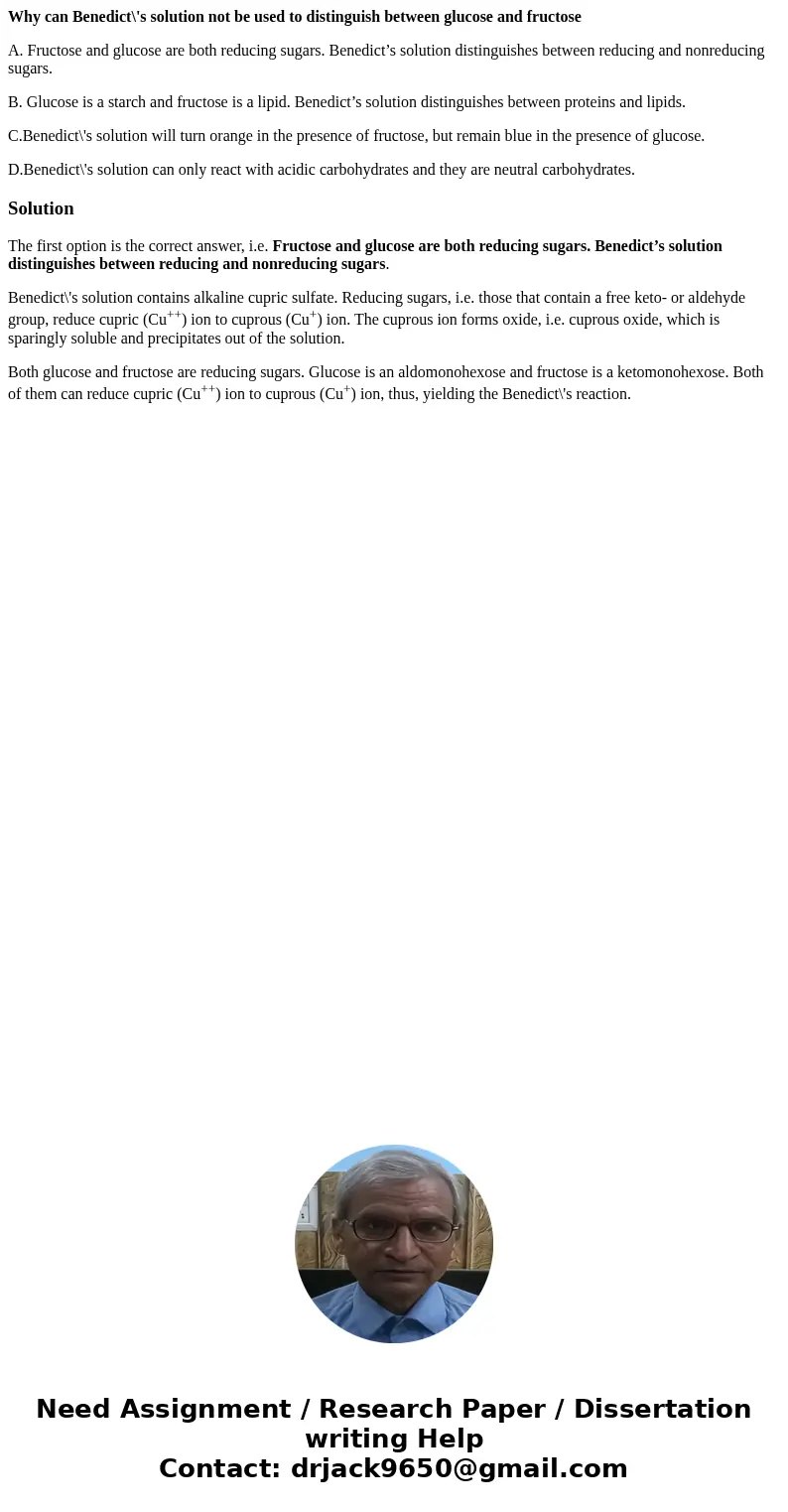Why can Benedicts solution not be used to distinguish betwee
Why can Benedict\'s solution not be used to distinguish between glucose and fructose
A. Fructose and glucose are both reducing sugars. Benedict’s solution distinguishes between reducing and nonreducing sugars.
B. Glucose is a starch and fructose is a lipid. Benedict’s solution distinguishes between proteins and lipids.
C.Benedict\'s solution will turn orange in the presence of fructose, but remain blue in the presence of glucose.
D.Benedict\'s solution can only react with acidic carbohydrates and they are neutral carbohydrates.
Solution
The first option is the correct answer, i.e. Fructose and glucose are both reducing sugars. Benedict’s solution distinguishes between reducing and nonreducing sugars.
Benedict\'s solution contains alkaline cupric sulfate. Reducing sugars, i.e. those that contain a free keto- or aldehyde group, reduce cupric (Cu++) ion to cuprous (Cu+) ion. The cuprous ion forms oxide, i.e. cuprous oxide, which is sparingly soluble and precipitates out of the solution.
Both glucose and fructose are reducing sugars. Glucose is an aldomonohexose and fructose is a ketomonohexose. Both of them can reduce cupric (Cu++) ion to cuprous (Cu+) ion, thus, yielding the Benedict\'s reaction.

 Homework Sourse
Homework Sourse